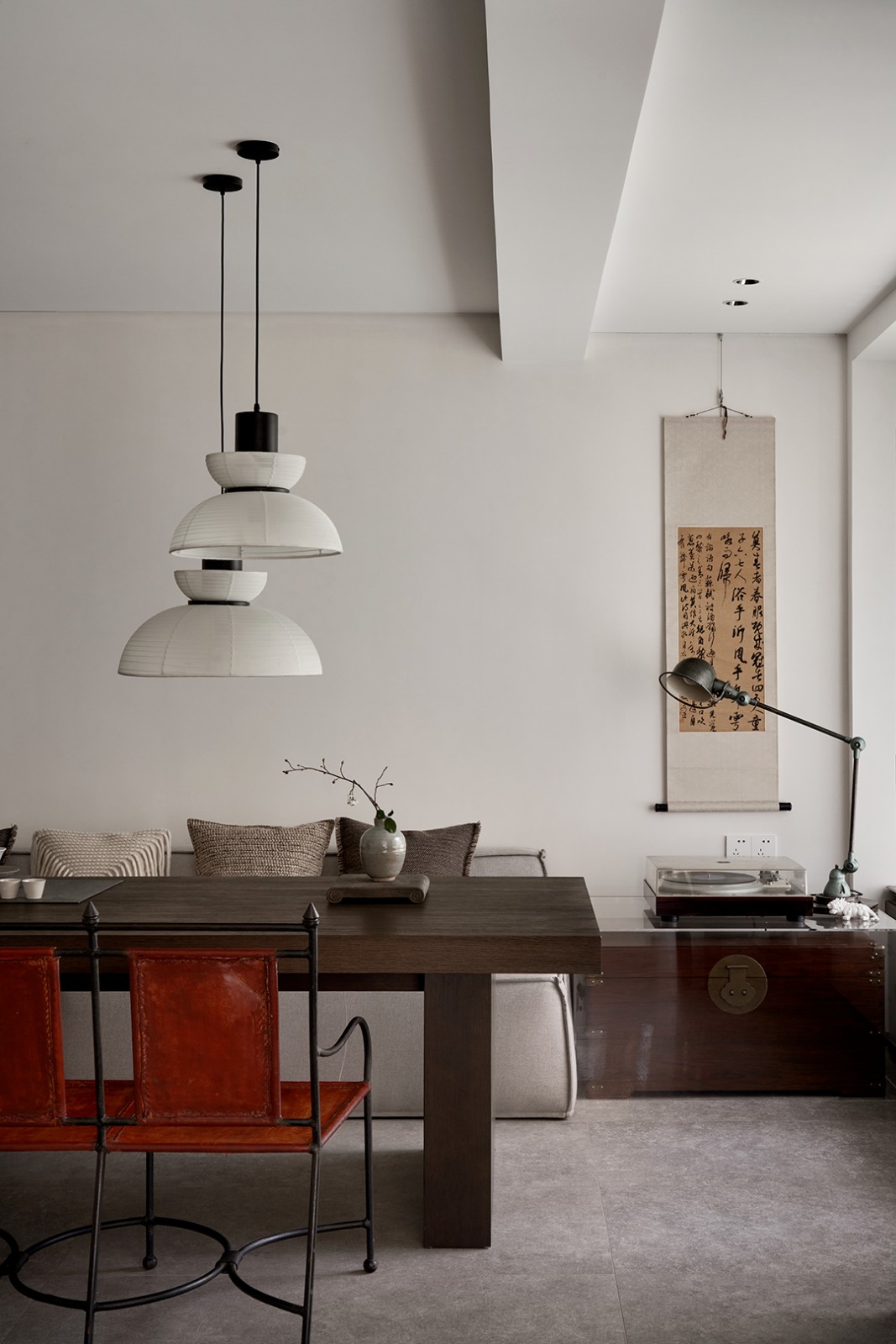Bar Aquarium Next Level Studio
2014-06-17 01:00
© Martin Kocich
马丁·科奇(Martin Kocich)


架构师提供的文本描述。咖啡厅的区域位于20世纪90年代城镇住宅的后面。重建是从古老的“设计”层中清理出来的,并通过去除原来的装饰拱门来通风空间。额外的建筑充满了整个地面,因此唯一的日光来源是原来的天窗。
Text description provided by the architects. The area of café - bar is located in the back additional building of town house, which dates from the 90s of the 20th century. The reconstruction was cleaned out from age-old layers of "design" and the airing of the space by removing the original decorative arches. Additional building fills the whole ground and therefore the only source of daylight is the original skylight.
Floor Plan


从一开始,投资者就坚持保留原名“喷泉酒吧”,但在施工过程中发生了变化。这里的名字是对话语空间概念的启发。自由联想:喷泉-间歇泉-水位唤起了一个动态的,不断变化的形状和颜色的故事。这种光的可变性,闪烁的灯光,颜色和反射是由一种较浅的颜色变化纤维的起伏结构形式铭刻在内部。整个区域以单色方式勾画,其效果最受重视。光线产生色彩信息,而简洁处理的空间则聚焦于物化。重要的是光的表面-它的纹理,光和光泽表面之间的细微对比.
From the beginning investor insisted on retaining the original name "Fountain Bar" but there was a change during works. The name here served as a source of inspiration to the concept of discourse space. Free Association: Fountain - geyser - water level evoke a dynamic, changing shape and color story. This variability of light, flickering lights, colors and reflections are inscribed in the interior by a form of undulating structure of lighter color changing fibers. The whole area is delineated monochromatically that its effect is most emphasized. The light creates color information whereas curtly dealt space focuses on the materialization. Important is the surface of the light - its texture, a fine contrast between matte and glossy
© Martin Kocich
马丁·科奇(Martin Kocich)


该空间为浅色结构的光导纤维.直径为3毫米的纤维通过12个玻璃框架决定最终的形态。总计已经使用了超过1000米的光纤和两个光源,这些光源通过光纤产生逐渐溢出的颜色。你可以调节颜色变化的速度,也可以把它挂在特定的色调上。结构设计采用参数化设计方法,在软件工具创建的基础上,在输入一定参数后产生不同形状的变化。这些都进行了可视化检查,然后又发生了变化。可以改变的基本参数有:玻璃框架的尺寸和距离、波纹控制圈控制的半径、穿过镜框的纤维数量、纤维的致密化等。参数化设计方法不仅可以找到最优的形状,而且可以方便地生成生产图纸、玻璃框架和精确确定所需长度的纤维。
The space is light colored structure of light-conducting fibers. The fibers with a diameter of 3 millimeters through 12 glass frames that determine the final morphology. Total has been used over 1000 m fiber and two light sources that create gradual spillover colors through fibers. You can regulate the speed of color change or suspend it in a certain tone. The structure was designed using a parametric design method, where based on our creating of software tools, were generated different shape variations after entering certain parameters. These were examined in visualization and then changed again. The basic parameters that can be changed are the dimensions and distance of glass frames, their radius controlled by ripple control circles, the number of fibers passing through the frame, their densification, etc. The method of parametric design served not only for finding the optimal shape, but also to easily create production drawings glass frames and accurate determination of the required length fibers.
© Martin Kocich
马丁·科奇(Martin Kocich)


新名称“水族馆”是从6米宽的水族馆,这是集成在前面板。加上轻巧的结构,创造了主要的空间优势,弥补了街景的缺失。在可开放的前面板是位于水族馆的技术和资源,光变色纤维。光纤网络也充当abc声音。在玻璃框架上沉积的RGB LED条用于任何照明和着色空间。
The new name "Aquarium" is derived from 6 m wide aquarium, which is integrated into the front panel. Together with light structure create a major dominant of space and compensate for missing view of the street. In the openable front panel are located aquarium technology and resources light color changing fibers. Finefibernetworkalso serves as abreaker sounds. RGB LED strips deposited on glass frames are used for any illumination and coloring space.


































Architects Next Level Studio
Location Josefa Stancla 154, 686 01 Uherske Hradiste, Czech Republic
Category Interiors Architecture
Architect in Charge Michal Kutalek
Area 70.0 sqm
Project Year 2012
Photographs Martin Kocich
























